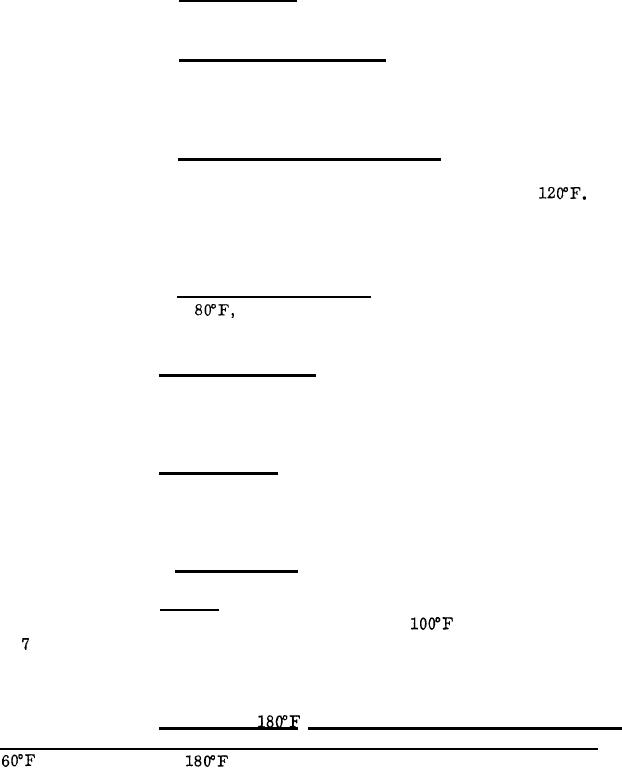 |
|||
|
Page Title:
Fluid temperature control system |
|
||
| ||||||||||
|
|  MIL-T-21578A
Bulkhead ports - Bulkhead ports shall be in accordance
3.4.3.5.3
with AND 10050.
3.4.3.6
Low pressure boost pumps - Low pressure centrifugal
boost pumps shall be of a type using a carbon shaft seal rotating against steel,
preferably with a steel surface stationary and the carbon seal rotating with
the shaft. Stuffing-box type shaft seals shall not be used.
Fluid temperature control system - Heating and cooling
3.4.3.7
of the test fluid shall be accomplished with a heat exchanger using hot or cold
water where the required test fluid temperature is between 80" F and
Heat exchangers shall have a purge line installed to permit the release of air
trapped in the cooling medium or in the test fluid The heat exchanger shall
be designed for use with fresh water,
Mechanical refrigeration - When the desired test fluid
3.4.3.7.1
mechanical refrigeration equipment shall be
temperature is less than
supplied as a part of test equipment.
3 . 4 . 3 . 7 . 1 . 1 Refrigeration unit - The refrigeration unit shall be
hermetically sealed (by fusion) and shall include a terminal box in accordance
with Underwriters Laboratories, Class 1, Division 1, Group D of National
Electrical Code, Article 500-Hazardous Locations to the electrical connections.
3 . 4 . 3 . 7 . 1 . 2 Unit capacity - The refrigeration unit shall be of sufficient
capacity to permit continuous operation of the test stand at maximum output and
shall not require more than 15 minutes to stablize the test fluid at the desired
temperature under normal operating conditions.
3.4.3.7.2
Heat exchanger -
3.4.3.7.2.1 Cooling - The heat exchanger shall provide the required
using cooling water
cooling when operating at an ambient temperature of
at with an operating pressure of 40 to 70 psi. Heat exchangers shall with-
stand a maximum operating pressure of 100 psi without leakage or permanent
distortion (see 6.3. 3(c)).
- The heat exchanger shall provide heat-
3.4.3.7.2.2 Heating to
ing to the specified temperature when operating at an ambient temperature of
and using water at
or steam not exceeding 5 psi as the heating media
(see 6.3. 3(d)).
15
|
|
Privacy Statement - Press Release - Copyright Information. - Contact Us |